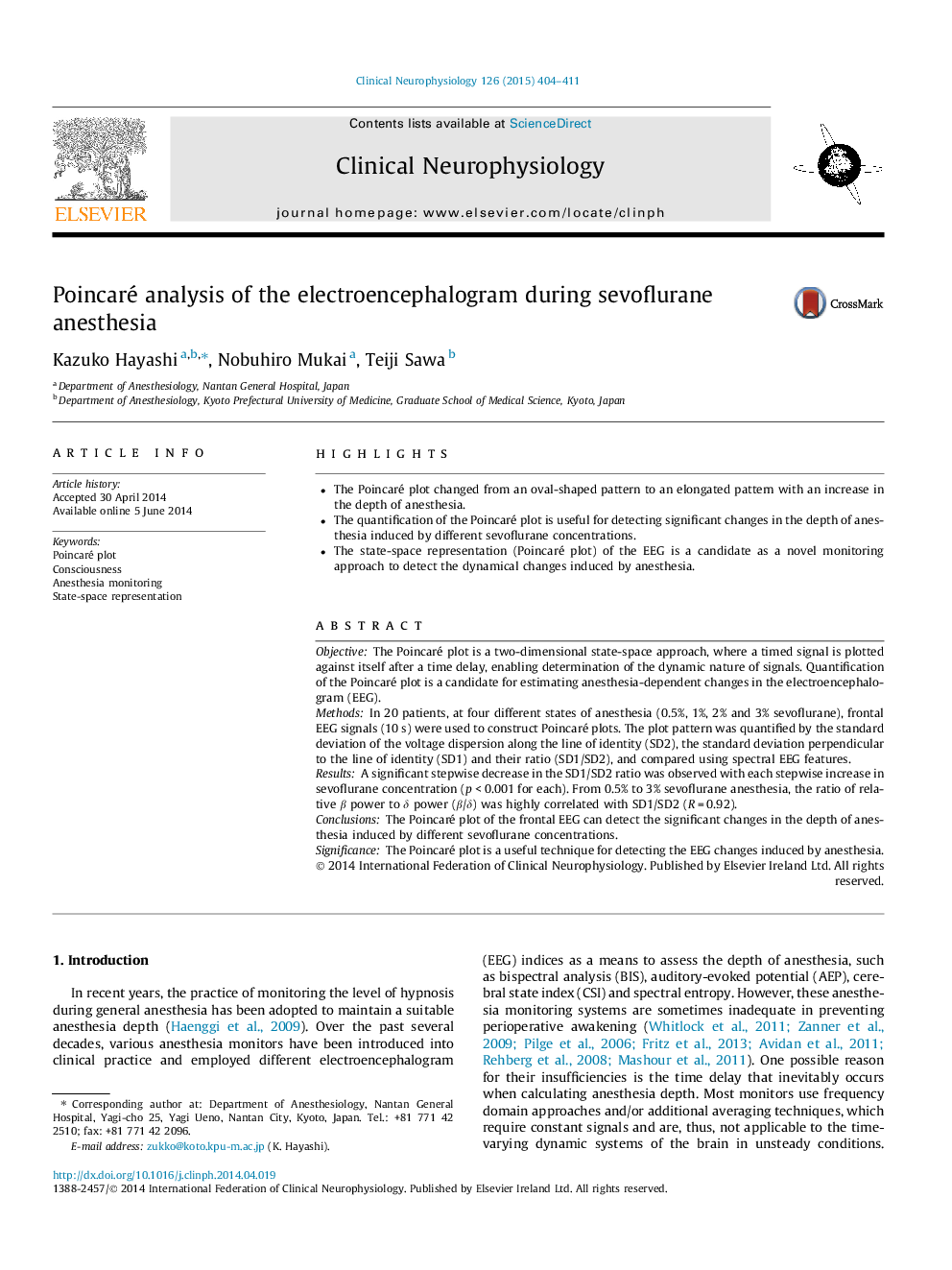| Article ID | Journal | Published Year | Pages | File Type |
|---|---|---|---|---|
| 3043085 | Clinical Neurophysiology | 2015 | 8 Pages |
•The Poincaré plot changed from an oval-shaped pattern to an elongated pattern with an increase in the depth of anesthesia.•The quantification of the Poincaré plot is useful for detecting significant changes in the depth of anesthesia induced by different sevoflurane concentrations.•The state-space representation (Poincaré plot) of the EEG is a candidate as a novel monitoring approach to detect the dynamical changes induced by anesthesia.
ObjectiveThe Poincaré plot is a two-dimensional state-space approach, where a timed signal is plotted against itself after a time delay, enabling determination of the dynamic nature of signals. Quantification of the Poincaré plot is a candidate for estimating anesthesia-dependent changes in the electroencephalogram (EEG).MethodsIn 20 patients, at four different states of anesthesia (0.5%, 1%, 2% and 3% sevoflurane), frontal EEG signals (10 s) were used to construct Poincaré plots. The plot pattern was quantified by the standard deviation of the voltage dispersion along the line of identity (SD2), the standard deviation perpendicular to the line of identity (SD1) and their ratio (SD1/SD2), and compared using spectral EEG features.ResultsA significant stepwise decrease in the SD1/SD2 ratio was observed with each stepwise increase in sevoflurane concentration (p < 0.001 for each). From 0.5% to 3% sevoflurane anesthesia, the ratio of relative β power to δ power (β/δ) was highly correlated with SD1/SD2 (R = 0.92).ConclusionsThe Poincaré plot of the frontal EEG can detect the significant changes in the depth of anesthesia induced by different sevoflurane concentrations.SignificanceThe Poincaré plot is a useful technique for detecting the EEG changes induced by anesthesia.
